Last Updated on April 24, 2023
The Great Pyrenees German Shepherd Mix is a giant crossbreed, and with big dogs come significant needs and personalities.
Before jumping into all that, you may be curious as to what to call this breed. They have many names like Shepnees, Shepnese, Shep Py, and Germanees.
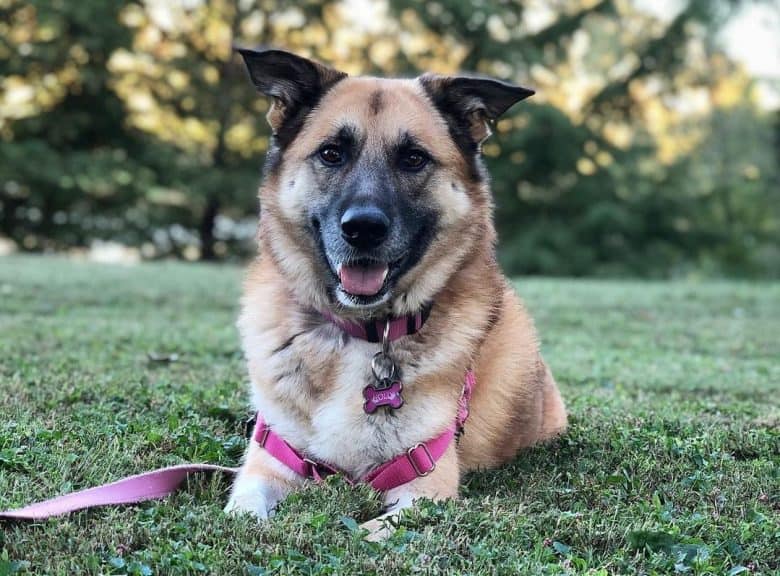
No matter the moniker you decide on, you’ll get an exceptional mix. So, let’s jump into what makes these giants so unique.
Quick Navigation
- 1 Origins: A Great Mix
- 2 What does a Shepnees look like
- 3 The Germanees Temperament: Are they good family dogs?
- 4 Taking Care of your Germanees
- 5 The Health of Your Shepnees
- 6 The Cost of Your Companion
- 7 Other Great Pyrenees and German Shepherd Mixes
- 8 Is this gentle giant the right dog for you?
- 9 Further Reading: Similar Breeds
Origins: A Great Mix
The Germanees are not a common crossbreed, and their actual start is a mystery.
However, both parent breeds are working breeds that have passed that drive down. Thus, we know this mix was crafted to be a working breed or herding dog.
Their name and variations thereof are combinations of the parent breeds.
Given that they aren’t recognized by the American Kennel Club (AKC), the best way to understand them better is to get to know their parents, so let’s meet the Great Pyrenees and the German Shepherd.
The Great Pyrenees
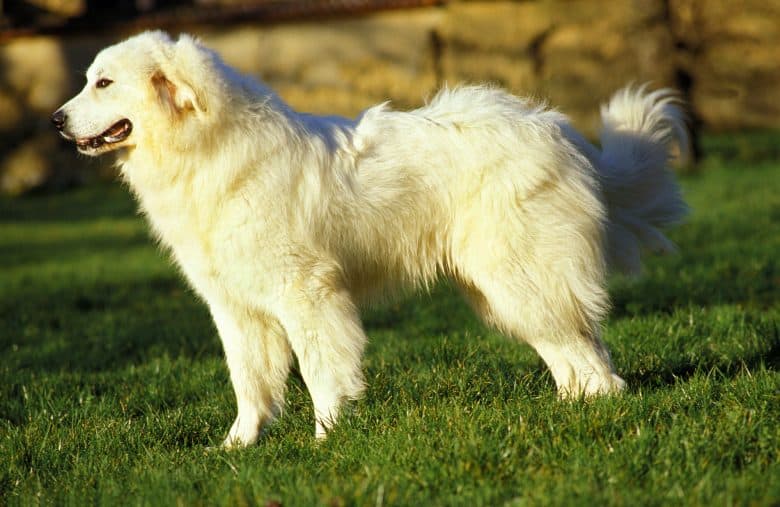
The Great Pyrenees is a large-sized breed with a thick, dirt and tangle-resistant coat. This working breed was bred centuries ago in the Pyrenees Mountains to help shepherds.
Their size kept herds moving and predators at bay for the herdsmen of the area.
The Pyrenees was considered a dog for farmers and peasants. It wasn’t until the 17th century that they became a favorite of French nobility.
This led to the breed finding a home outside of the mountains. But they didn’t find their way to the United States until 1824.
It took over a hundred years for the American Kennel Club to recognize the Pyrenees breed in 1933.
They are independent and bred to be stoic watchdogs that save their energy when the herd is in danger. This trait also makes them stubborn when it comes to training.
They simply won’t see the point in exerting their energy to sit and stand repeatedly. They enjoy canine activities like cart-pulling, but they’ll only need moderate exercise.
The Great Pyrenees is a sweet and gentle giant that is loving and loyal to its family. They are great with children and other animals.
Rarely aggressive, this breed prides itself on being a protector. This protective instinct can make them often bark as they’ll want to keep you alert.
The German Shepherd
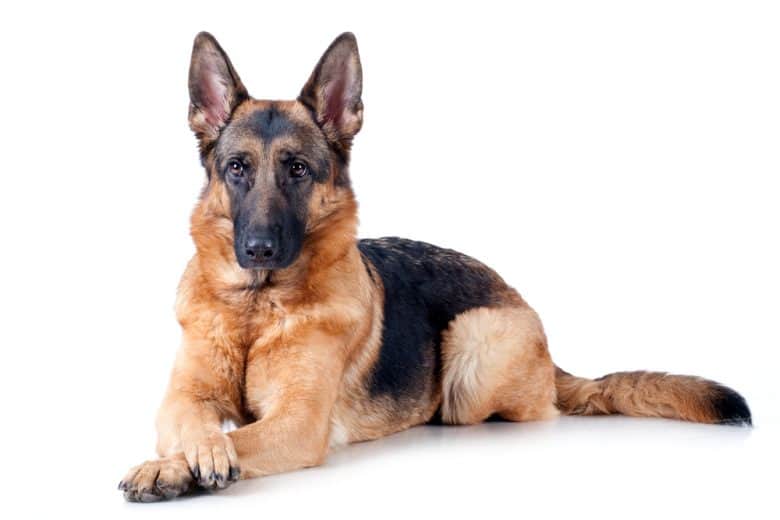
It’s easy to recognize the medium to large-sized German Shepherd dogs (GSD). After all, they are ranked #2 on the AKC’s Most Popular Breeds list.
You may have also surmised that they got their start in Germany, but there is more to it than that.
Originally a traditional herding dog, that changed in the 1890s when Captain Max Von Stephanitz started the Society for German Shepherd Dogs.
After purchasing a dog that met all the specifications he was looking for in the perfect German working dog.
The German Shepherd saw a rise in popularity in the 1900s, and the AKC recognized the breed in 1908. Today, they are still beloved for their intelligence, agility, and trainability.
These make them perfect for roles such as a working dog for the police, the military, therapy assistance, and even acting—looking at you, Rin Tin Tin!
German Shepherds are revered working dogs with a fearless nature. They have high energy, but they will love and protect their family diligently.
There are numerous reasons this purebred is so popular, and their prevalence proves it.
What does a Shepnees look like
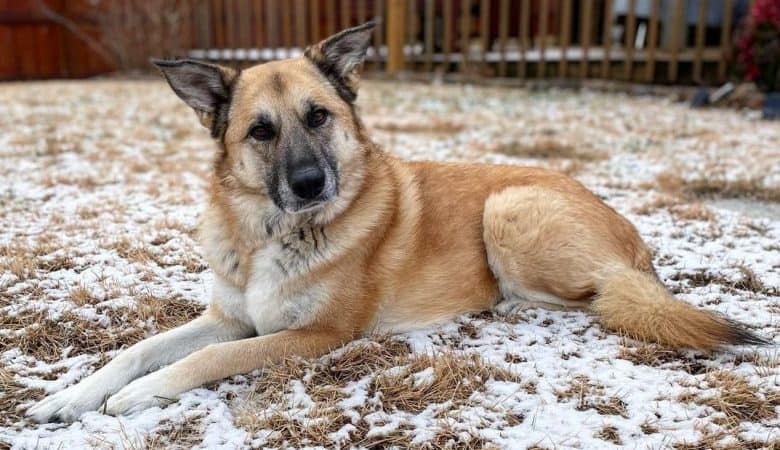
The Shepnees is a unique designer dog that can vary in appearance based on its inherited attributes from the parent dog breeds. Their body will be long and muscular with a long tail.
Their head is well-proportioned to their frame, and it can feature drop ears or erect ones, but they have long muzzles and brown eyes. This pup can also have droopy jowls.
Their size and coat can also vary in appearance, even down to puppies in the same litter.
Built to Work: Germanees Size
When a dog is labeled a large to giant breed, they mean it.
Your Germanees won’t be as massive as some giant breeds, like the Mastiff, but they can still have an imposing presence. So how significant is that presence?
Let’s take a look at the Germanees’ average weight and size by gender:
| Great Pyrenees German Shepherd Mix: | Male | Female |
| Height: | 22-36 inches | 22-32 inches |
| Weight: | 75-120 pounds | 75-120 pounds |
The Germanees can be quite muscular, and their size can be intimidating. The size of your pooch will depend on the parent it takes after.
Since both parents are quite large themselves, expect a huge dog who will need large spaces to move.
A Variable Coat
Your Germanees will have a dense coat with short to long fur that has the possibility of being water-resistant.
They may also have a ruff around their necks that almost looks like a mane, and they shed too, so they’re not hypoallergenic.
If your Germanees pooch has a shorter-length coat, it likely favors the German Shepherd, but a longer fur means this comes from the Great Pyrenees.
Both parent breeds feature a double coat, so your doggo will also have this attribute no matter what. Pups from this crossbreed may look wildly different.
Coat Color
The color of your pup’s coat will also vary on the parent it favors. The German Shepherd offers up black and rust colors that are prominent in their coats.
The Great Pyrenees can bring solid white and cream colors, black, or a tan/fawn hue.
Your pooch can feature a solid color or a combination of the parent colors. They can also feature grey or brown fur.
Given that this is still a young crossbreed, there is still a plethora of variation in the breed.
The Germanees Temperament: Are they good family dogs?
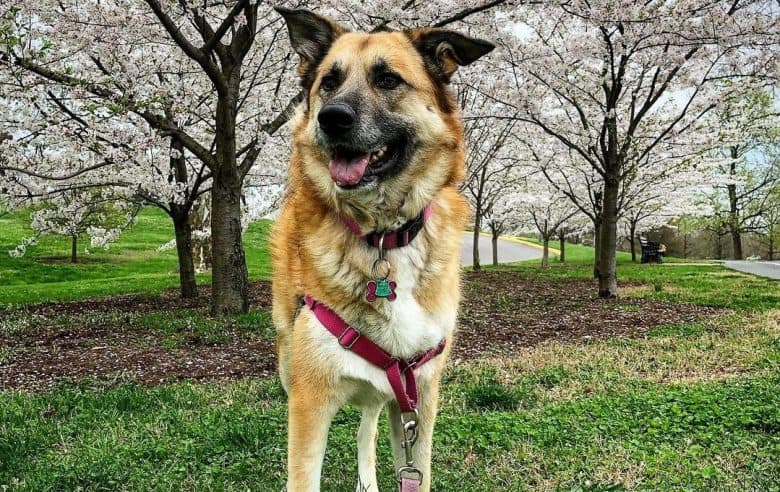
One interesting thing about your Germanees can very well be their temperament. They are a perfect mix, inheriting the gentle nature of the Great Pyrenees and the loyal heart of a German Shepherd.
But the German Shepherd and the Great Pyrenees have differing natures. The Pyr can be a little stubborn and challenging to train, but the German Shepard is known for its high trainability.
What that means for your pooch is that its personality can differ depending on who it takes after.
Your Shepnees pup will be intelligent and loyal while also being protective. Your dog can also be an excellent family dog as they generally do well with kids and families.
You need to train them and allow socialization at an early age to ensure their best behavior.
If your pup takes after his German Shepherd parent, they can be suspicious of strangers, territorial, and a bit more aggressive.
They are also prone to stress and separation anxiety if left alone for long hours.
On the other hand, if your doggo takes after his Great Pyrenees parent, they tend not to be very aggressive and nurturing to other animals.
They are more independent and do not require as much attention as a German Shepherd.
Taking Care of your Germanees
There are a lot of factors that will influence the needs of your Germanees. If they have a thicker coat like the Pyrenees, they can handle cold better than the shorter German Shepherd coat.
Their exercise needs would depend on your pooch’s size as they can be medium to high maintenance.
Exercise Needs
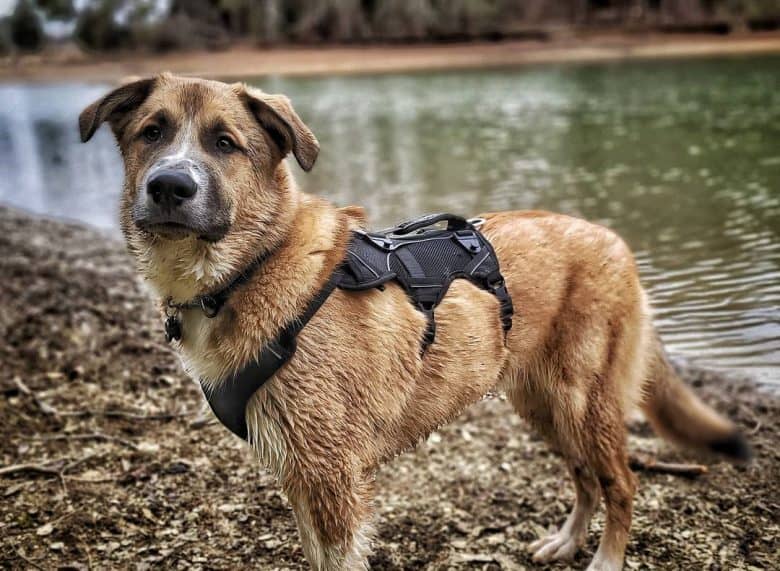
Your Great Pyrenees German Shepherd mix needs to be exercised every day. It can be the most high maintenance aspect of them. They are active dogs and will love to run and explore.
Long walks, big fenced-in yards to roam, and even training are excellent tools to help these doggos get their energy out. They will need between 60-90 minutes of daily exercise.
They will also enjoy forms of obstacle and obedience training. They’ll like to show you how skilled they are if you use positive reinforcement.
Be aware that because of their Great Pyrenees heritage, some of these pups will be stubborn during training.
Check out this training boot camp video to get a glimpse at a Germanees dog’s obedience skills:
Grooming a Gargantuan
Most of their grooming needs are simple. Keeping their nails trimmed is crucial, and you may also need to check for nail breakage, which can be expected in active breeds.
Bathing them once every month or two will suffice, but you may need to take special care as their German Shepherd parent can have skin issues. You’ll also need to brush your pup’s teeth a few times a week.
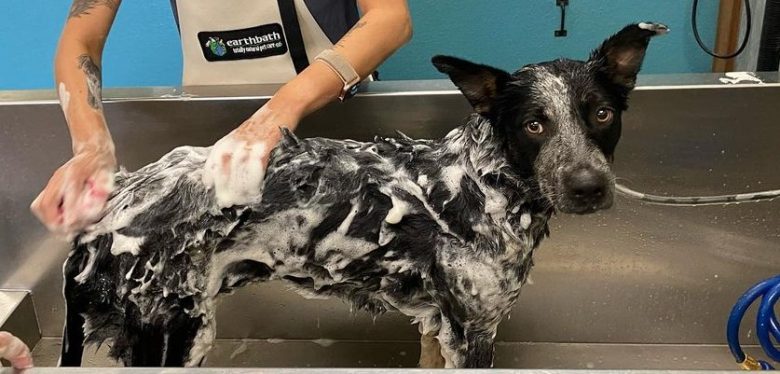
Coat care can differ depending on the parent from which they got it, but they can shed a lot. Shorter coats will be fine with brushing every 2-3 days, but longer coats that favor the Pyrenees will require more.
Longer coats will need daily brushing to keep out tangles. These coats can also feature more hair on the legs, feet, ears, and around the eyes that requires regular trimming.
Checking the hair around the ears can be pivotal in overall ear health. It’s essential to keep their ears free of contaminants.
A Healthy Diet
Big dogs have big diets. Your Germanees will need 3 to 3½ cups of food daily when they are fully grown.
Ensure it’s high-quality kibble or dog food designed for large or giant breeds, which they’ll need from the time they are growing pups.
Monitor their diet and exercise levels to ensure they aren’t overweight, leading to health concerns. Follow a recommended diet and adjust amounts for your pooch if needed.
The Health of Your Shepnees
Any mixed breed dog is susceptible to health problems prominent in the parent breeds, and the Germanees are no different.
They could suffer from heart conditions like murmurs and Subaortic Stenosis. Possible eye conditions may include Cataracts, Ectropion, and Retinopathy.
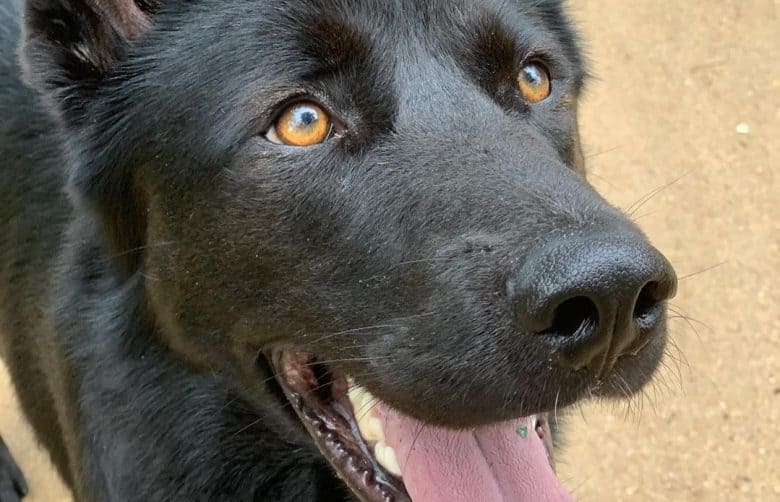
There are numerous orthopedic conditions they may be at risk for, such as hip dysplasia, elbow dysplasia, osteochondritis dissecans, osteochondrodysplasia, panosteitis, arthritis, and patellar luxation.
Glucosamine and chondroitin supplements can help in fighting these problems.
Bloat, or gastric dilatation-volvulus, can be a potentially fatal condition that you can combat by feeding your pup 2 to 3 times a day.
Be sure to keep an eye on their diet too, as they can suffer from obesity if they overeat.
Epilepsy, diabetes, cancer, and deafness are possible in the breed, and they can inherit skin conditions like atopy, which can heighten skin allergies.
Other conditions are possible, such as Von Willebrand’s disease, pancreatic acinar atrophy, degenerative myelopathy.
Glanzmann’s thrombasthenia (Type 1), hypothyroidism, neuronal degeneration, Addison’s disease, and autoimmune diseases.
Always consult with your veterinarian and be sure to have your dog screened and tested for potential health concerns.
X-rays, eye exams, fecal exams, urinalysis, complete blood count, skin biopsy, skin scrape, and Buccal Mucosal Bleeding Time (BMBT) are all tests or screenings that can help keep your pup happy and healthy.
The average Germanees lifespan is 10-12 years, so true love and care will keep them by your side for a long time.
The Cost of Your Companion
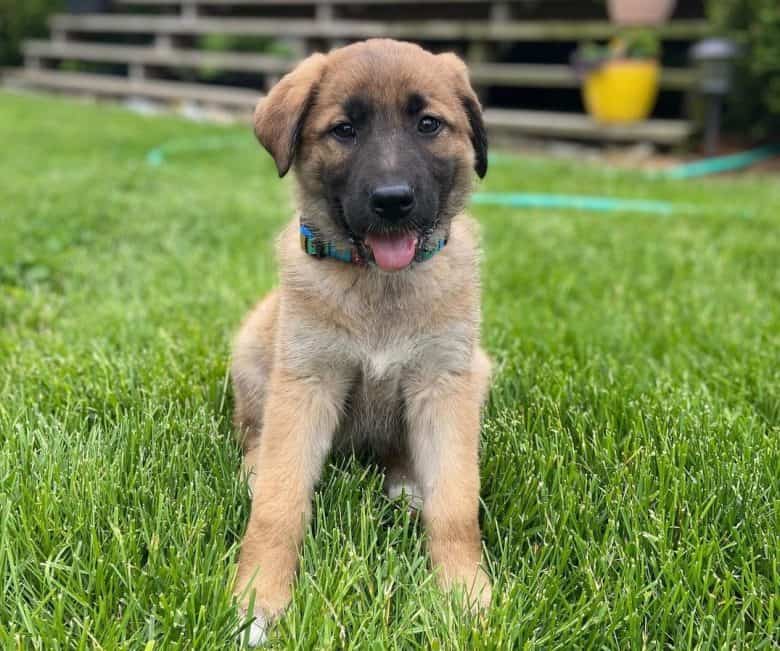
One of these mixed puppies can run you $400 to $500 from a quality breeder, and they can be hard to find, but don’t let that hinder your search.
Do your research to avoid puppy farms where living conditions are inadequate and health takes a back seat to profit.
A reputable breeder will also share information regarding genetic backgrounds and health concerns.
Don’t forget initial costs like food, microchipping, spaying or neutering, and pet care products. Take a look at this New Dog Checklist to see the supplies you may need.
Annual costs for big dogs will also be more extensive. Their food bill will be high and veterinary costs can also be more significant.
Breeding Them Big
The Shepnees is a rare breed, and finding a breeder for them can be a challenging endeavor. You can check with German Shepherd and Great Pyrenees breeders, but there is no guarantee even then.
Your best bet can be to hit the big sites and search for German Shepherd mixes or Great Pyrenees mixes.
Sites like Pet Finder, Greenfield Puppies, and Lancaster Puppies will have numerous mixes for you to browse, but be sure to research each puppy and breeder before you make a purchase.
If you genuinely want to find this pup, you’ll have to put in some work, but they’re worth it for the right person.
Rescuing a Gentle Giant
Adopting a dog in need is always admirable, but with a rare breed like this, you may not find them at just any shelter. Your best bet will be shelters that focus on German Shepherds or Great Pyrenees dogs.
The GPRS or Great Pyrenees Rescue Society has a record of adoptable dogs, some of which are mixes, and the same goes for the National Great Pyrenees Rescue.
German Shepherd Rescue and Adoptions lists adoptable dogs on their site with possible mixes available.
Other Great Pyrenees and German Shepherd Mixes
Maybe the Germanees have captured your curiosity, and you’re wondering about other German Shepherd and Great Pyrenees mixes. Luckily, we’ve got a few mixes that may intrigue you.
Great Pyrenees Mixes:
Golden Pyrenees: The Great Pyrenees Golden Retriever mix is a large, giant-sized dog that is high-energy, loving, and affectionate. They need space but are great for active families.

Great Pyrenees Lab Mix: A cross between the Great Pyrenees and a Labrador Retriever, this medium to the giant-sized dog makes a loyal family pet and an excellent guard dog.
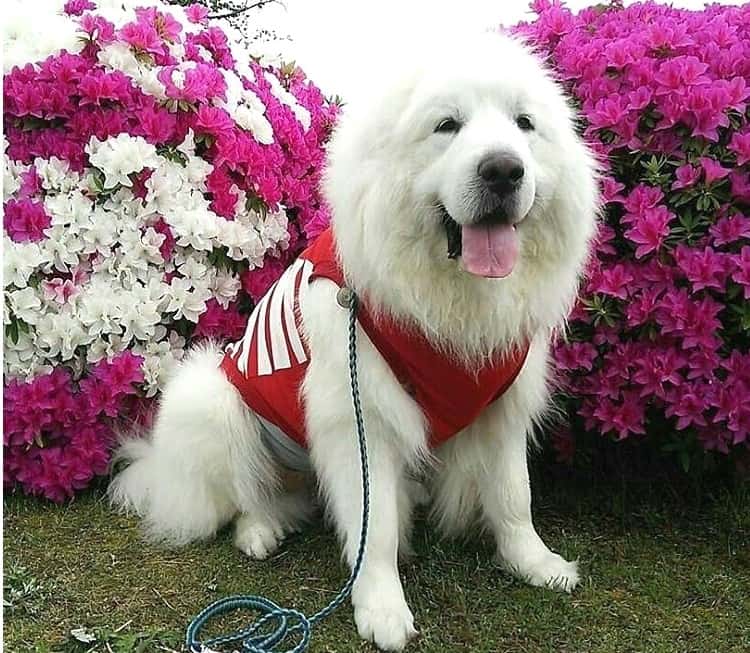
German Shepherd Mixes:
German Shepherd Border Collie Mix: Also called the Shollie, this medium to large-sized cross is brilliant, full of energy, and excellent with families.
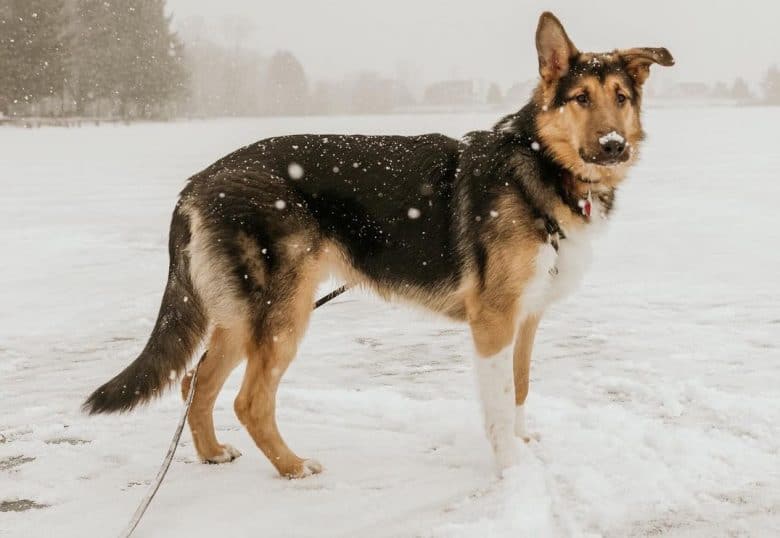
German Shepherd Husky Mix: This medium to large fluff ball is a gentle protector with a lot of energy to expend physically and mentally.
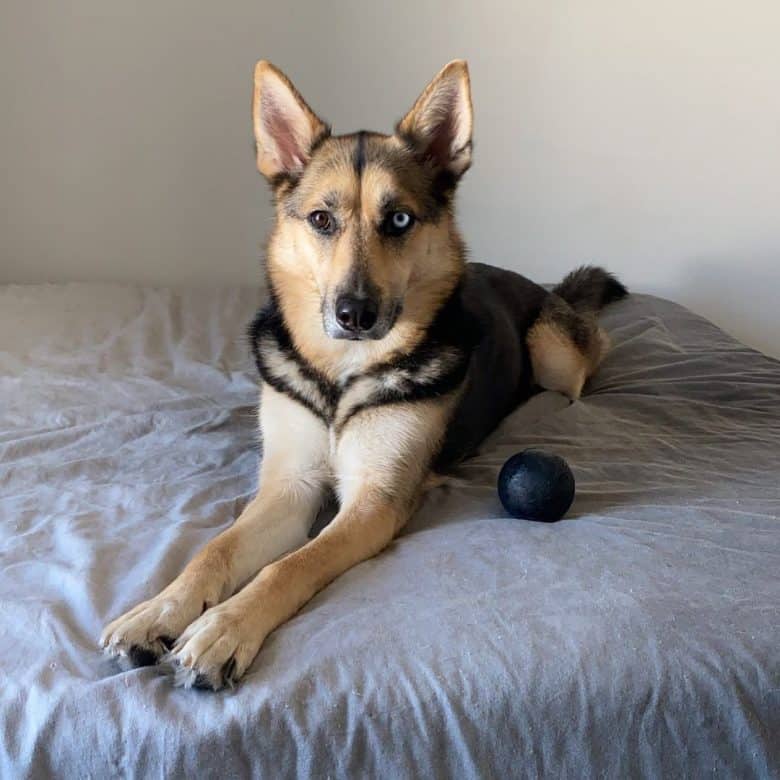
Golden Shepherd: The Golden Retriever German Shepherd mix is medium to large-sized and makes for an excellent watchdog or family pet.
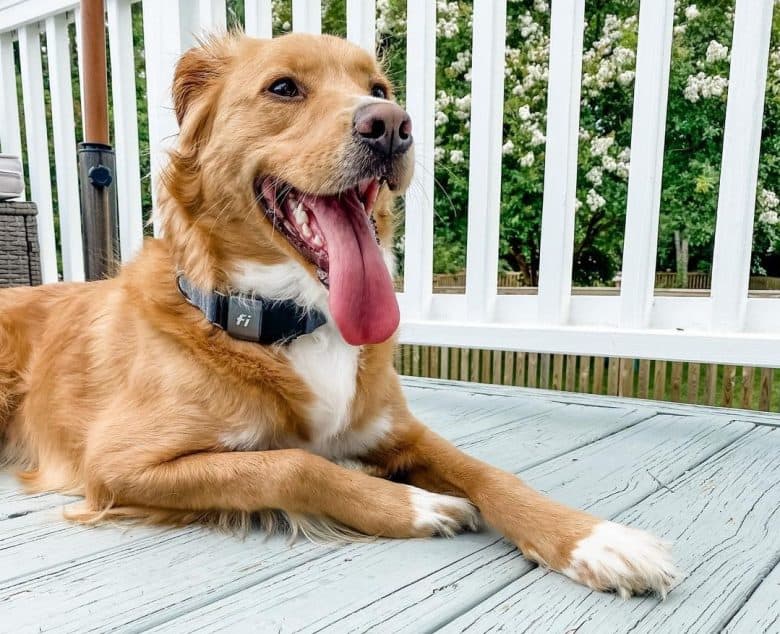
German Shepherd Doberman: A cross between the German Shepherd and the Doberman Pinscher.
This large pup is an excellent guard dog that can be independent and affectionate but likely not great for families with young kids.
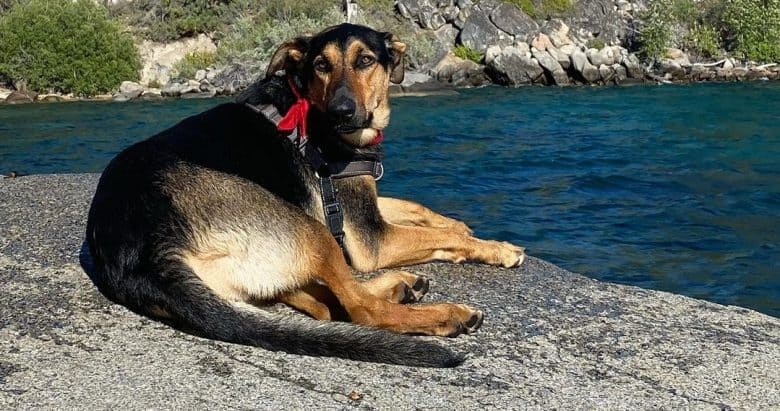
Is this gentle giant the right dog for you?
If you lead an active life and can handle the energy level of the Germanees, you’re on the right track, but you’ll also need to dedicate time to training and grooming.
They will be loyal, loving, and protective of the whole family, but they’ll need space for their size and energy.
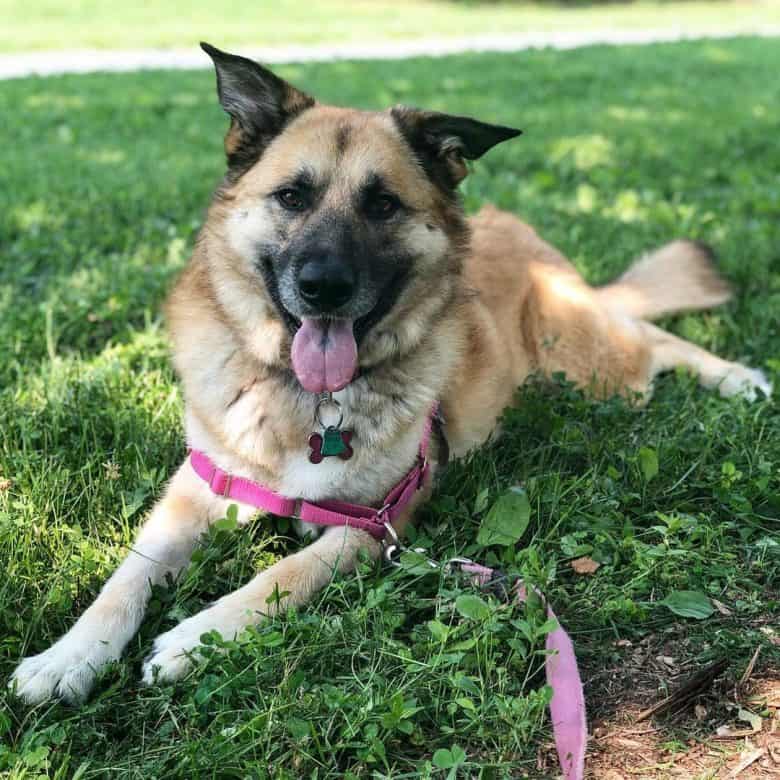
The Great Pyrenees German Shepherd mix might not be the best pet for first-time dog owners as their size and needs require extra attention.
If you cannot provide adequate space, time for their care needs, or time for training and socialization, this may not be the pup for you.
Make sure you weigh all the pros and cons, do your research, and ensure your life can meet their needs before deciding if this dog is for you.
Further Reading: Similar Breeds
- Russian Bear Dog
- Great Bernese (Great Pyrenees Bernese Mountain Dog Mix)
- Old English Sheepdog
- Dutch Shepherd
Cess is the Head of Content Writing at K9 Web and a passionate dog care expert with over 5 years of experience in the Pet Industry. With a background in animal science, dog training, and behavior consulting, her hands-on experience and extensive knowledge make her a trusted source for dog owners.
When not writing or leading the K9 Web content team, Cess can be found volunteering at local shelters and participating in dog-related events.
